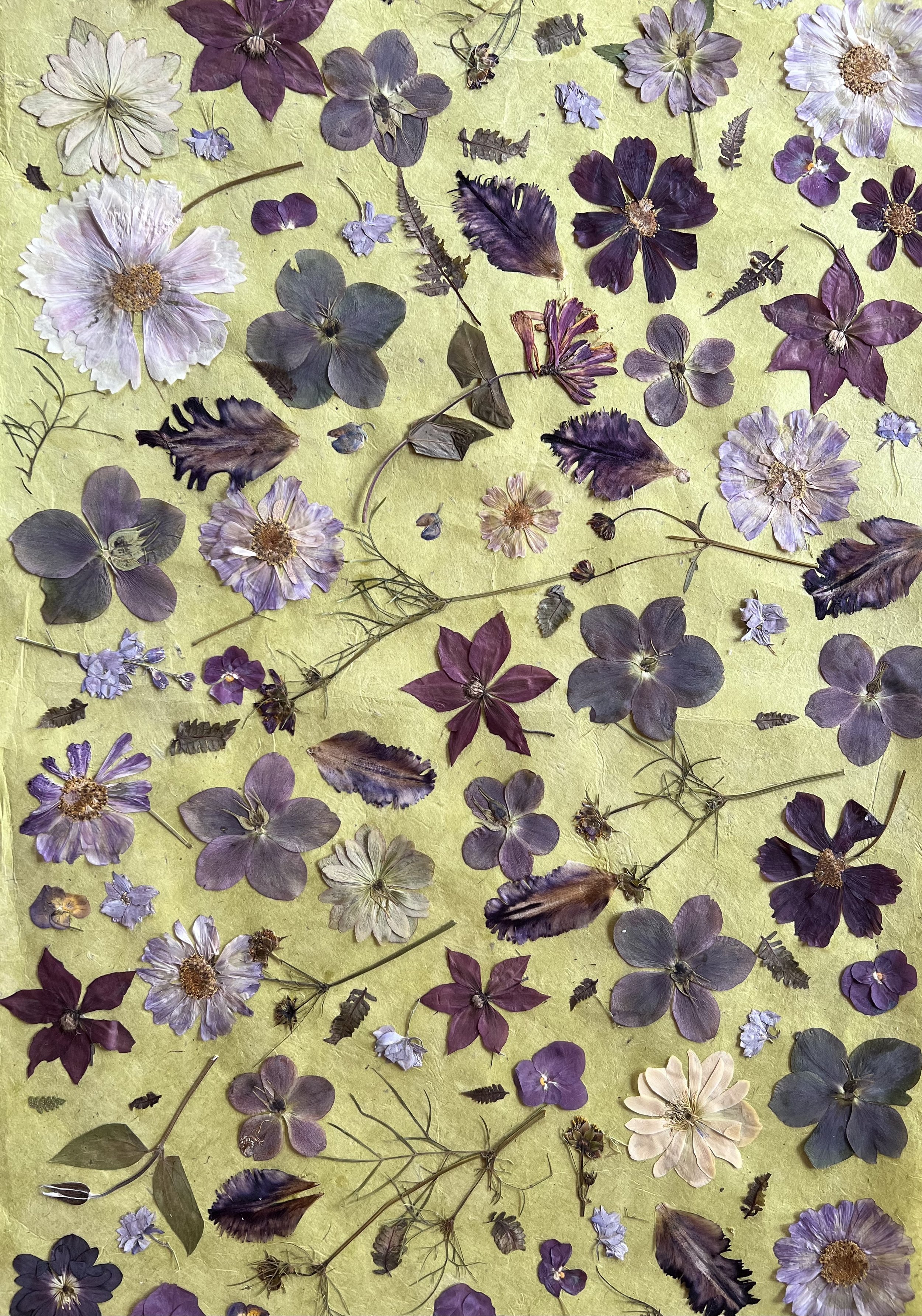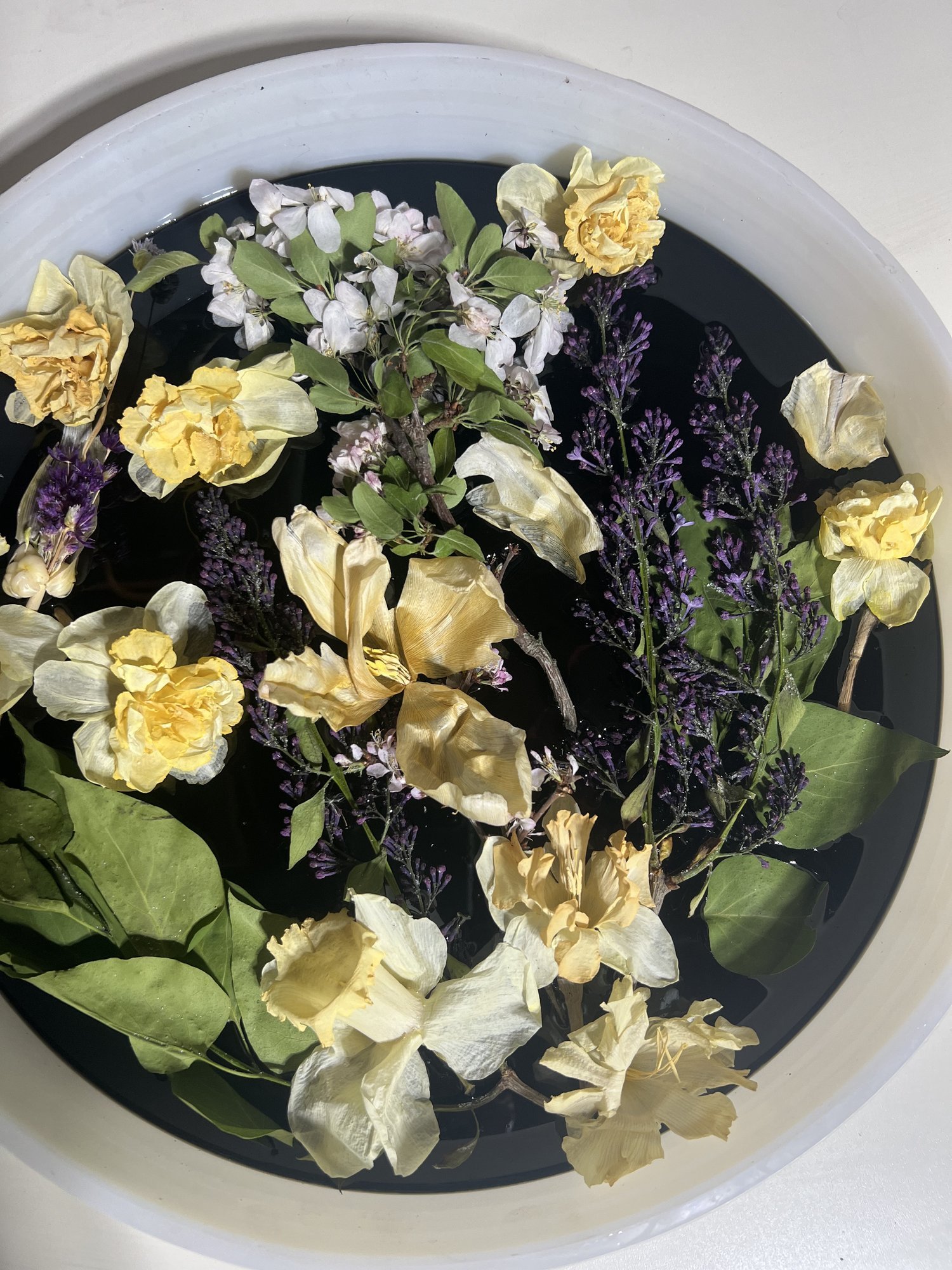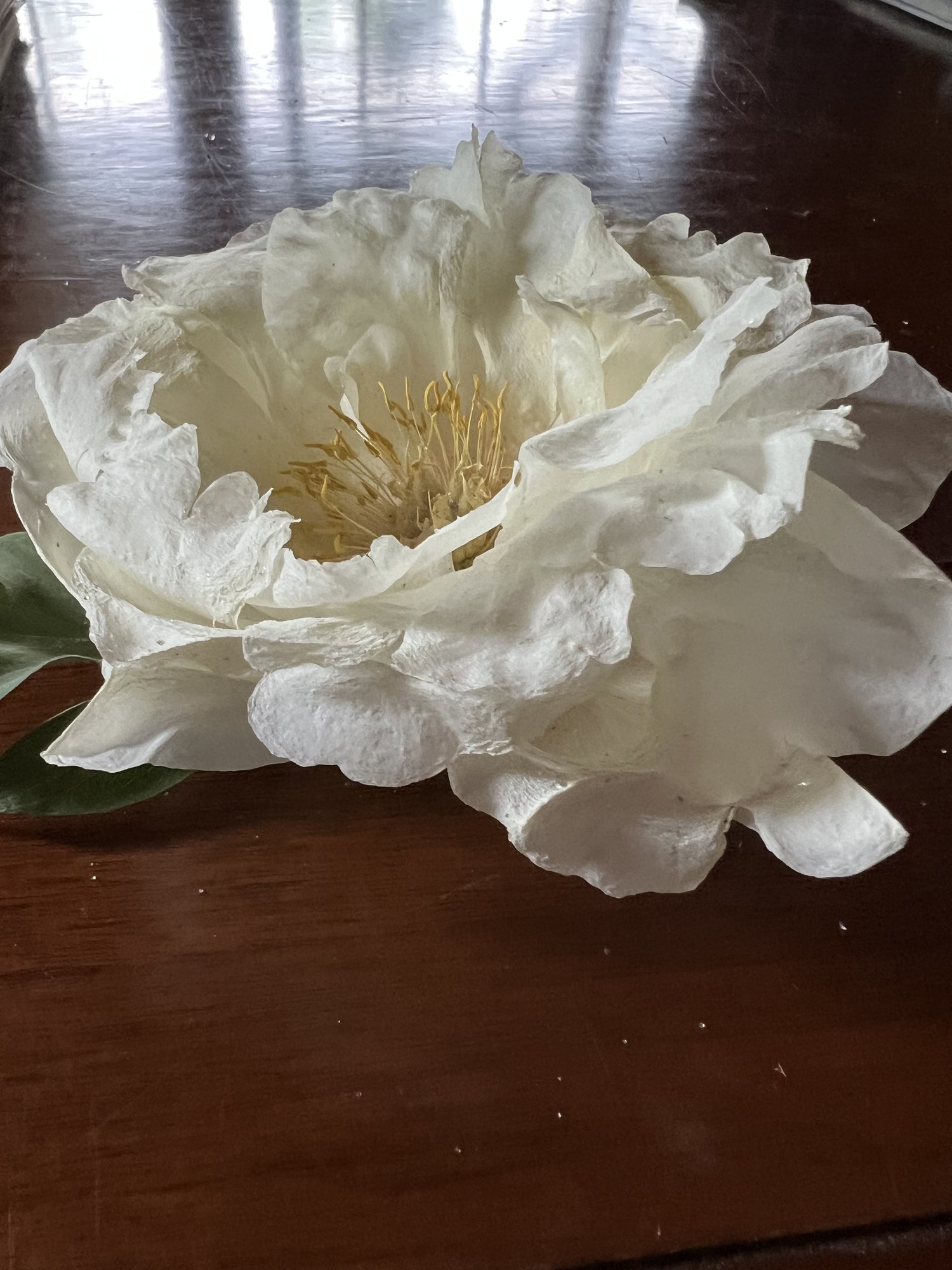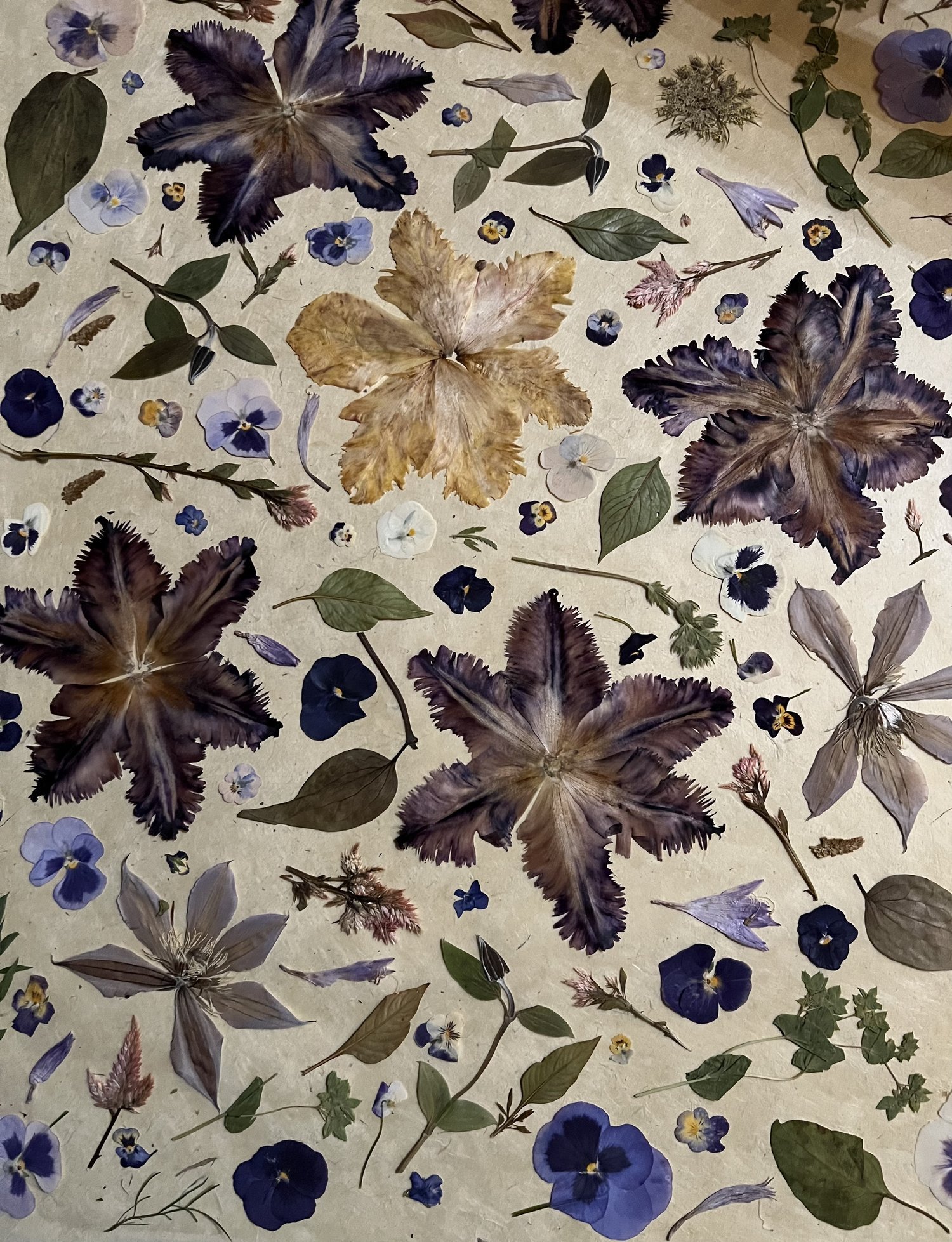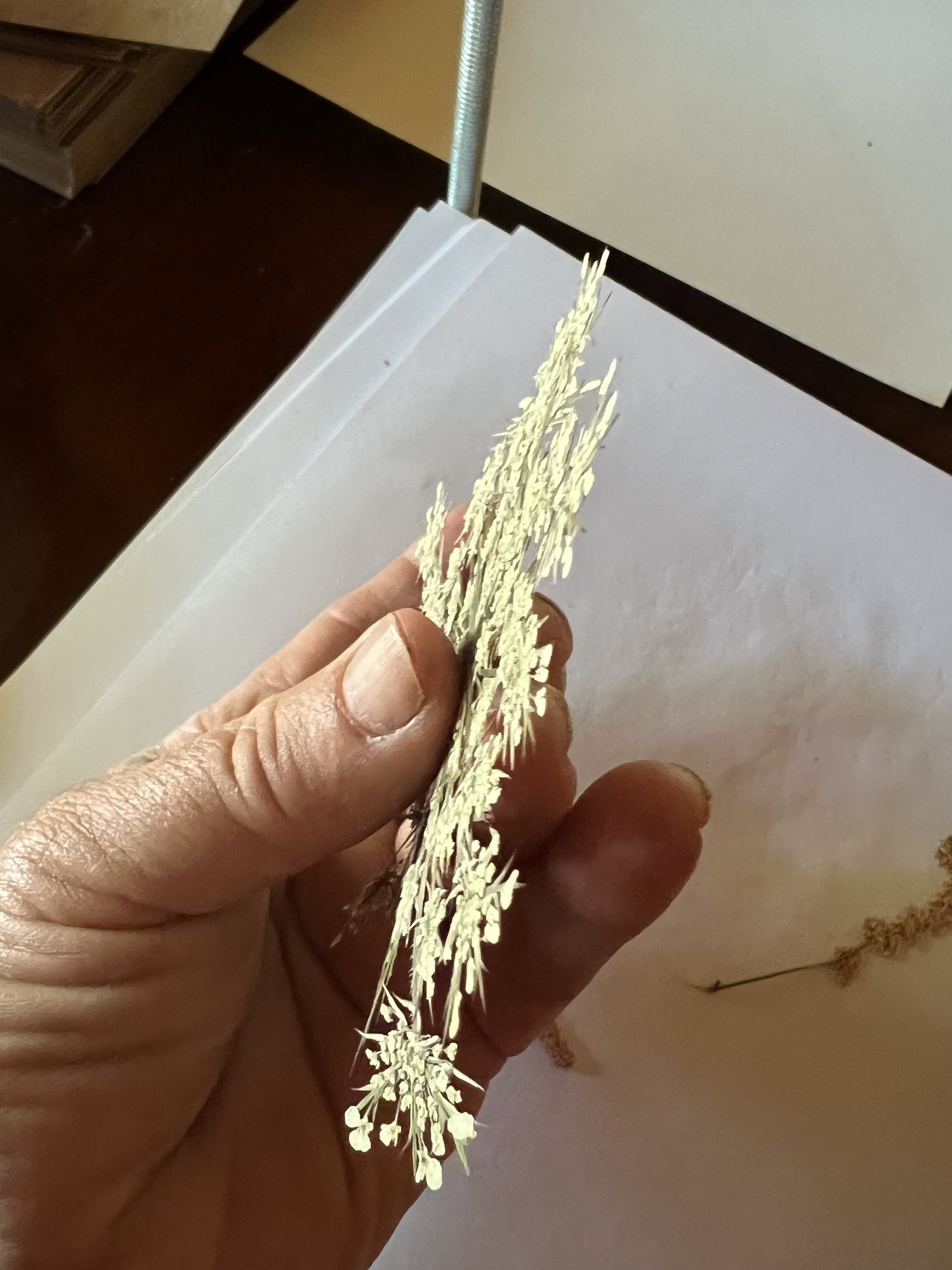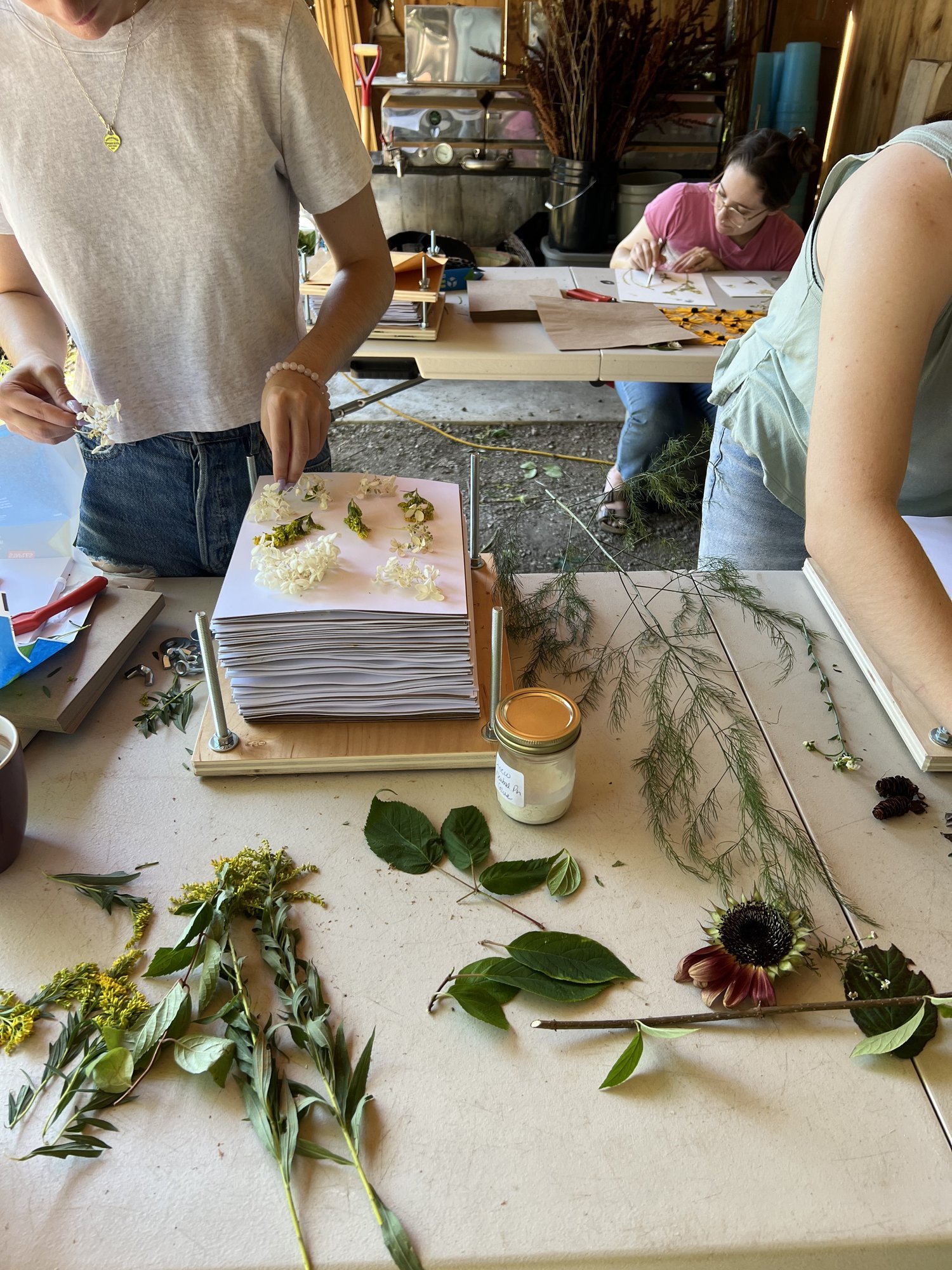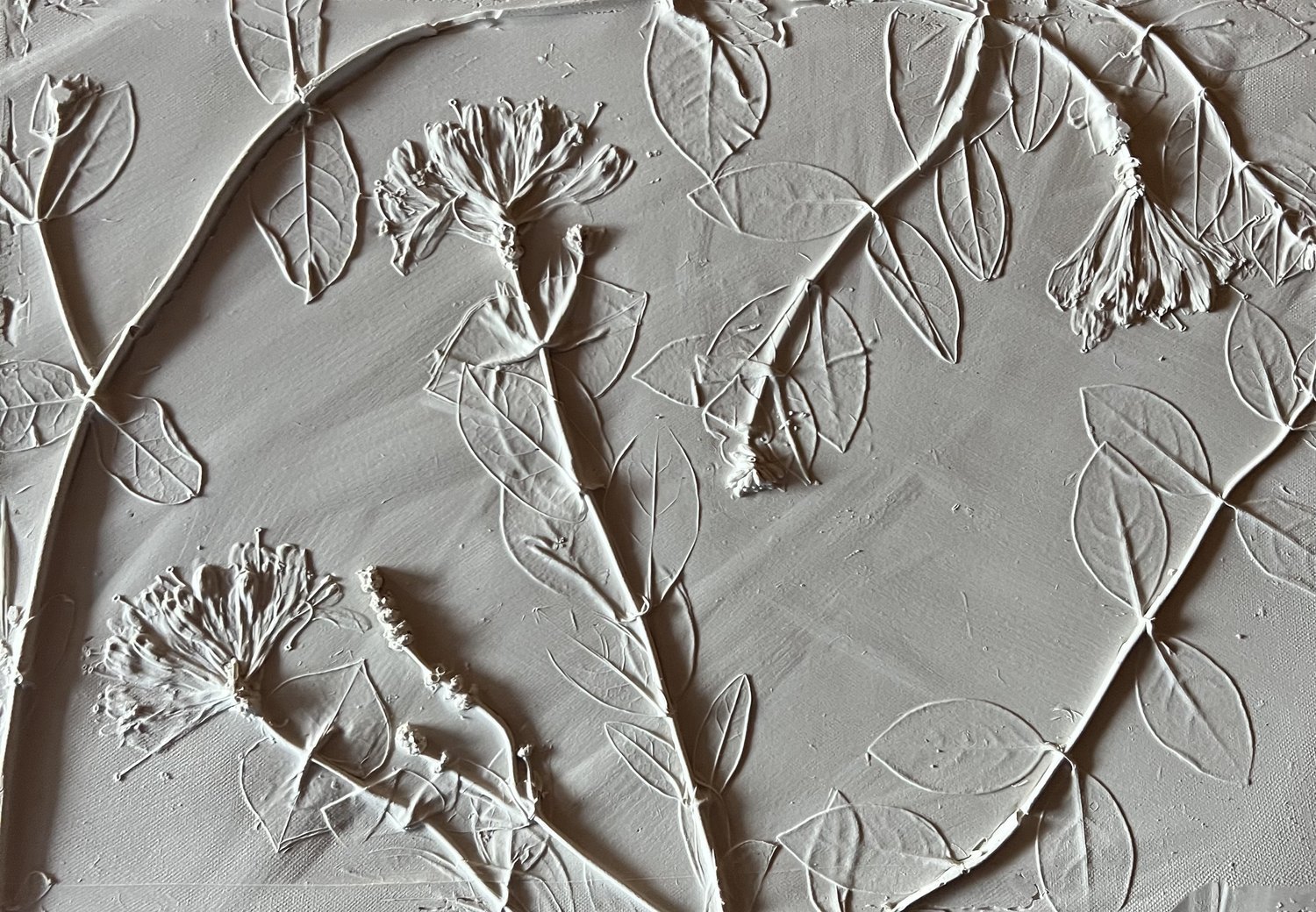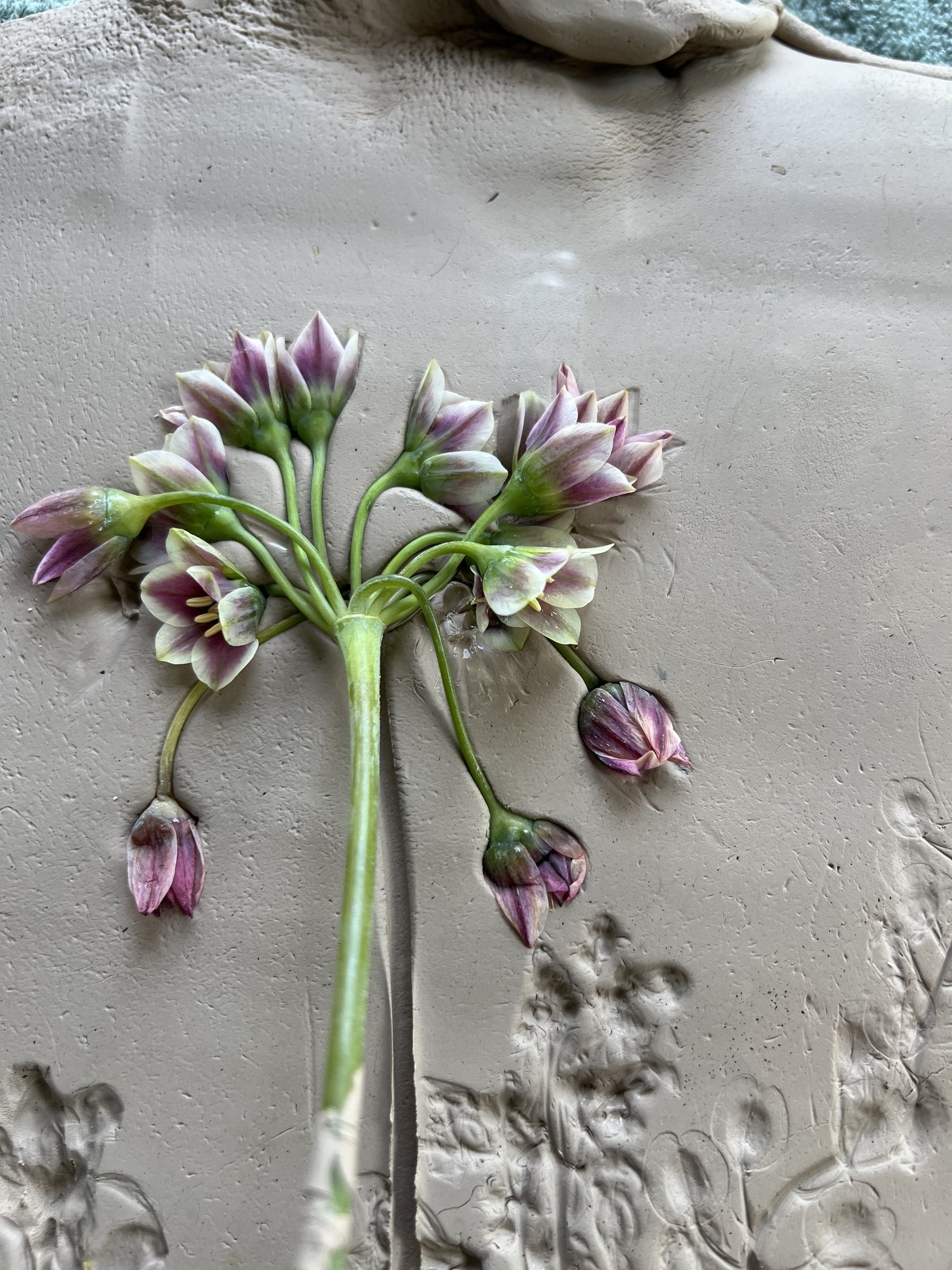Preserving, Pressing and Casting Botanicals
Collage of Pressed Flowers 20×30”
I thought explaining the difference between these three methods of working with flowers was necessary, particularly with regard to construction of Keepsakes. There are Pros and Cons for each method and limitations for each as well.
Preserving florals involves placing fresh or relatively fresh flowers into Silica Gel beads to completely dry flowers, intact, maintaining their 3D qualities. Preserved florals can then be placed in Resin (multitude of options for shape and size etc) or an airtight container such as a cloche or Shadow Box. There is a certain amount of skill and time required to get the florals just so, and handling them after drying can be tricky as they are extremely fragile, and can shatter. Some colours do darken in the process though, so it is not quite exact. Certain flowers just plain don’t work well this way - it is extraordinary but imperfect. The curing time for resin can vary too, as can the pouring and drying time of layers of resin over time. thin pieces obviously dry faster (pressed flowers work well here).
Pressing florals is the act of simultaneously flattening and drying a flower for a myriad of uses artistically.
Pressed florals can be used in Resin, Collages (which can be used for any number of things), lamp shades was always a traditional favourite.
Pressed flowers will over time lose their colour and fade - mimicking the path of life - which is natural. Some Botanical Artists will ‘touch up’ the colour of a flower to present a brighter colour version but despite this all the flowers end up the same in the end. It is why I find the colouration a waste of time and money.
For Collages, it is the gluing that is the trickiest part and I have ruined more flowers by rushing or losing focus. The glue must be neutral pH too. True flower press will give an even pressure for flattening the florals, then a stack of cookbooks! Trust me I started with the cookbooks and was amazed at the difference and speed, quality, and quantity with a traditional press, especially for more difficult flowers. Humidity is also an important factor, and not your friend!
Either way the cycle of life will cause the colour maturation over time.
Botanical Plaster Casting or Bas Relief is a process of making a clay mold of fresh botanicals, removing them from the clay and pouring plaster into the mold to create a piece of Art.
The process of removing the botanical pieces can be very time consuming and tedious. The up side is that the plaster dries relatively quickly to reveal a beautiful Cast from the mold - The Reveal - and then left to dry approximately 5-7 days.
The colour of the clay used can also impart shading to the plaster for effects, or painted with acrylic paint to create a colourful tactile piece. There is always some sanding or removing excess clay colour or something similar to do after the cast is revealed. Adding cement to the plaster, (a step I have not done yet), would allow the pieces to survive outdoors in the elements.
Stunning wall hangings and inserts into cabinet doors for architectural interest and visual appeal are other uses, not always considered. I am still exploring this methods uses!
In summary, All three methods of preservation have pros and cons depending upon what you want the piece to ultimately do for you, but as Keepsakes of Florals you have options. The flowers need to be as fresh as possible for preserving and pressing but not so much for Casting, although it helps! All methods require composition skill and understanding of each flower and characteristics is very handy as well.
Preserving and casting require at least a week or more to complete each piece which is why workshops don’t exist (to my knowledge) but Pressing can be fairly quick. Some really easy flowers like Pansies and violas can be done in a week (or less) in a press and completed as a collage in an hour or less, while Sunflowers and others much longer and more difficult to do.
One important fact to keep in mind, Resin is expensive to purchase as well as annoying to use, but the results can be extraordinary. The majority of the price of Resin pieces is in the Resin, unfortunately, not necessarily the Artist’s composition.
